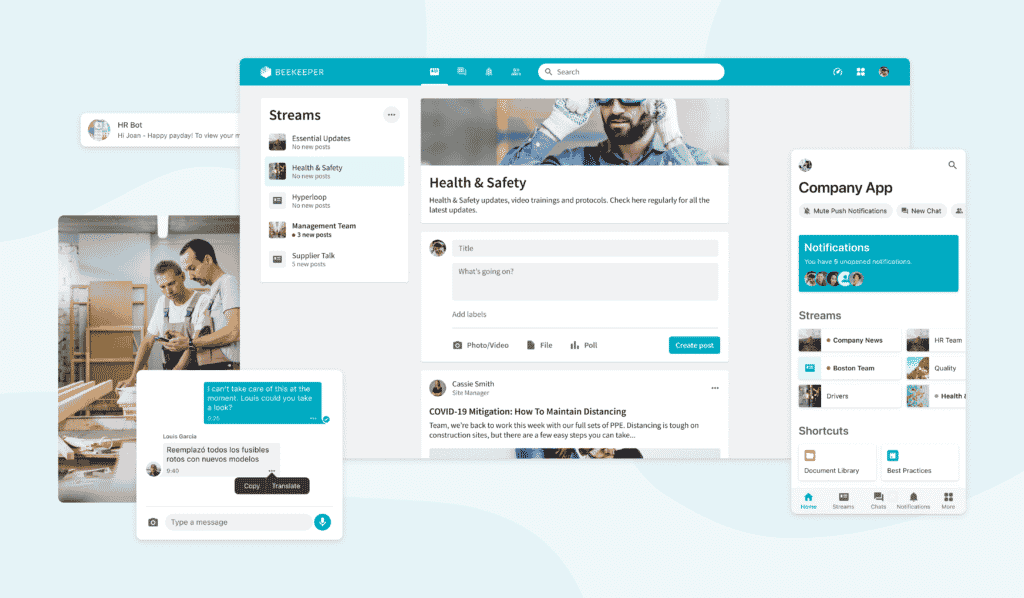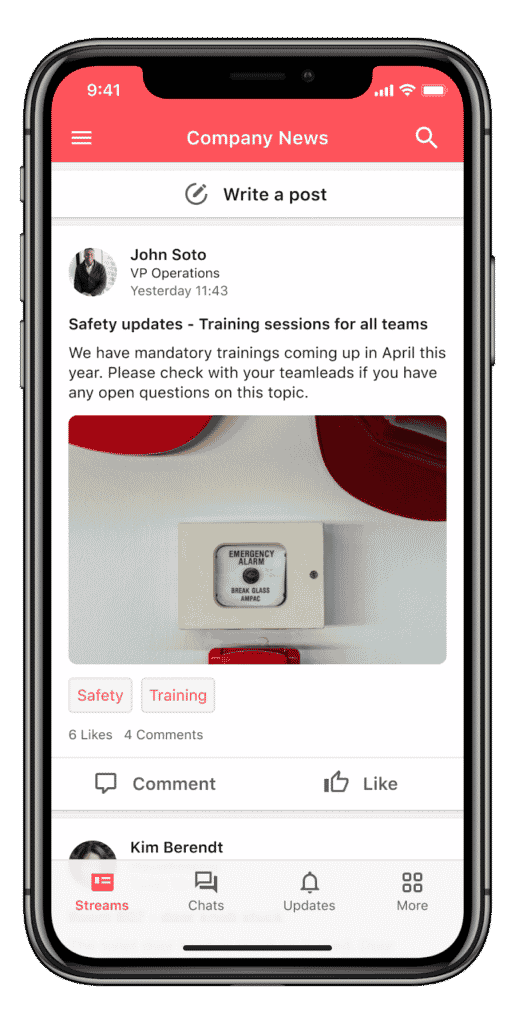As team leaders, production managers have the essential responsibility of understanding how to manage factory production. While there are countless corporate cheerleading tactics that motivate office workers, finding the right strategy to get frontline manufacturing workers fired up and excited is more difficult.
How to Run a Factory: Connecting Your Workforce
For years, factory workers on the shop floor have been disconnected from the rest of the organization. This really isn’t all that surprising considering 70% of the workforce in America is disconnected at work.
But the disconnect is particularly bad in the manufacturing industry. According to an article in Forbes,
“The transportation, manufacturing, and production fields have the greatest percentage of workers who are most unhappy on the job.”
– Susan Adams, Forbes Staff
A disconnected manufacturing workforce is a problem for several reasons.
- Creates higher turnover rates
- Lowers overall productivity
- Makes day-to-day life harder for factory workers
- Creates more opportunities for work-related safety incidents due to poor work instructions
This is exactly why more manufacturing companies are finding new ways of managing a production team. They’re now looking to connect their entire workforce and provide a single source of truth for information to their factory workers. It’s good for production. It’s good for the employees. And it’s good for morale.
Here are five ways to motivate your factory workers and get your production line running like a well-oiled machine:
1. Encourage Bottom-Up Communication for Factory Workers (and learn from it)
Most manufacturing companies only have a top-down internal communication strategy, meaning management can send information to employees, but the information doesn’t flow back up the corporate ladder.
Operational communication is like a pyramid. At the top you have official announcements and mandates that cascade down to the rest of the organization. In the middle, there is the team and department communication. This is where work is often coordinated and delegated across functions of the organization. Finally you have 1:1 and small group communication (hint: this is also where most of the knowledge transfer happens in manufacturing). At the base of the communication pyramid is where the actual work gets done.
This where your factory workers are coming together to solve problems, overcome operational challenges, and learn from each other to improve their skills.

There is a wealth of knowledge at the base of the pyramid. This is where your operations managers can gain true insight into the day-to-day operations of the business. Solving lots of small problems has far greater impact than fixing a few large ones. Make sure that the organization is encouraging bottom-up communication in order to leverage that oh-so-valuable institutional knowledge.
2. Find New Ways to Streamline Processes and Save Time
A factory worker can spend up to 3 hours per week looking for the information they need to do their job.
Now that’s demoralizing. It crushes motivation (and the soul) faster than almost anything else.
For decades factory workers had no easy way to find, sort, and store information and resources they needed for their jobs. Imagine every time that a line worker has a question, that person has to hunt down the one other person on the shop floor who knows the answer.
Most traditional forms of information sharing for manufacturers was hard to scale and difficult to standardize. Employees often had to rely on nearby co-workers for guidance and knowledge transfer.
But now, more and more manufacturers are moving towards mobile-friendly digital workplaces.
With a tool like Beekeeper, frontline manufacturing employees can:
- Check shift schedules right from their mobile phones
- Translate chats and company announcements into their preferred language
- Access a mobile-friendly document library which gives them 24/7 access to all the SOPs, training materials, and information they need

By empowering employees with the information they need to do their jobs quicker, better, and safer, morale on your manufacturing teams will improve, and the motivation to do their best will soon follow.
3. Providing Ongoing Training and Upskill Support
With the mass exodus of baby boomers retiring from the workforce, manufacturing’s most valuable assets are its remaining employees. They are a vital resource keeping the manufacturing industry going right now. But as the scope of their jobs shift away from traditional hands-on manufacturing, these factory workers will need to develop new skills.
According to the Manufacturing Institute,
“Manufacturers are set to spend $26.2 billion on internal and external training initiatives for new and existing employees in 2020.”
The rise of Industry 4.0 will require new skills and more technical knowledge. Invest in the professional development of your workforce, and your manufacturing employees will, in turn, be more emotionally invested in the business.
4. Make Health and Safety Information More Accessible
Safety should be a top priority for manufacturing companies, especially now as organizations must quickly enforce new safety regulations due to COVID-19.

As states begin to reopen their economies (and factories) some frontline employees say they’re “nervous and anxious about going back to work.”
A digital workplace can help ease the anxieties your factory workers may have about going back to work. You can leverage the power of real-time communication to keep your workers updated, informed, and reassured, which will help them stay motivated as they resume their work.

For instance, an aluminum recycling company had to implement new guidelines around social distancing and temperature checks for factory workers. They used Beekeeper to share a “how-to video” with the organization on using a thermal temperature gun. They’ve also been able to communicate upgraded cleaning processes and coordinate staggered shifts in order to keep their workforce safe and remain operational at the same time.
5. Facilitate Fast Knowledge Transfer Through Digital Enablement
Knowledge transfer is crucial to a high-performing manufacturing workforce. But due to a lack of digital tools for factory workers, many organizations lack a scalable, systematic process to capture this critical knowledge and experience.
Creating a culture of real-time knowledge transfer through digital enablement will help build an atmosphere of continuous learning and growth, which is intrinsically motivating in itself.
In the next 5 years, 20% of factory workers will retire and over 50% of your workforce will be digital-native millennials. As a manufacturer, it’s important to start asking yourself, “How will I transfer knowledge to the next generation of employees?”
Tips for knowledge transfer in a factory:
- No more “death by PowerPoint.” Younger generations want relationship-based, social mentoring
- It needs to be interactive
- It shouldn’t center around an employee’s departure. Knowledge transfer should be a daily part of working life
- Make knowledge digitally accessible so it can be easily searched, stored, and referenced far into the future
Learn how to keep your manufacturing employees motivated. Download our ebook today!
Most Frequently Asked Questions
They are also referred to as manual, technical, blue collar or common laborer.




